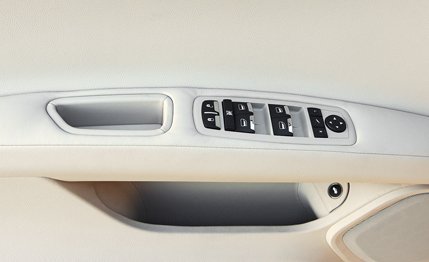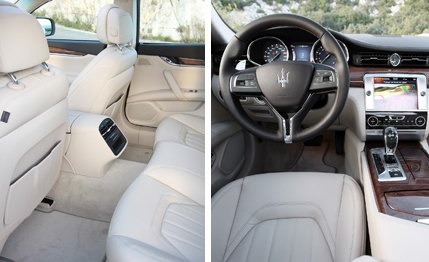
 First Drive Review
First Drive Review
Both eminently lovable and deeply flawed, the last Quattroporte behaved like an Italian sports car tormented by its four-door body. Ferrari’s bastard child with its Maserati subsidiary, it was a thrilling and capable machine destined never to wear the black-equine seal because it was born with the defect every pur-sang sports-car showroom shuns: quattro porte. A personality crisis on wheels, at least it had a personality in a segment full of luxury sedans often short on it.
However, Maserati is changing. Ambitious plans are afoot to grow the trident brand from a small-batch carmaker into a full-line luxury-car manufacturer. In the next three years, Maserati will add to its GranTurismo and GranCabrio lineup the redesigned Quattroporte, a new mid-size sedan, and an SUV. Maserati sold fewer than 6300 cars worldwide last year. With a new Turin factory churning out a more complete catalog, it hopes to move 50,000 cars in 2015. To accomplish that, the reborn Maserati must be seen not as merely Ferrari’s dollar menu, but as a viable alternative to the German competition.

 A four-inch wheelbase stretch will improve the lives of rear-seat riders. The new Quattroporte's interior is less distinctive than the old car's.
A four-inch wheelbase stretch will improve the lives of rear-seat riders. The new Quattroporte's interior is less distinctive than the old car's.
This particular Italian renaissance begins this summer with the sixth-generation Quattroporte. Larger than its predecessor, the 2014 Quattroporte measures up in size to the current Audi A8, BMW 7-series, and Mercedes-Benz S-class. The 124.8-inch wheelbase is more than four inches longer than before, and overall length is up to 207.2 inches. Rear-seat riders benefit the most, although all occupants will appreciate the 2.5-inch wider body. Despite the supersizing, the Italians claim a 4190-pound base curb weight, which is slightly lighter than the old car. A steel unibody still lies underneath the skin, but the front suspension towers, doors, front fenders, trunklid, and hood are all aluminum. Most of the control-arm front suspension and multilink rear suspension components are also aluminum to shave even more mass.
Sculpted in-house, the new Quattroporte evolves the design of its Pininfarina-penned predecessor. It is obviously a Maserati, and obviously a handsome sedan. But gone are the graceful curves and the tense athletic profile of the last car. Doors with frameless glass, a unique touch among big sedans, open to an interior that also doesn’t measure up to the idiosyncratic craftsmanship of the old model. The clean and tasteful design is foiled by downgraded materials and execution. In the preproduction versions we were shown, different types of leather were used throughout. Some seem as good as before, and some do not. The impression that you’re in Ferrari’s sedan, or Bentley’s nemesis, is gone. Commodification has snuck into the Quattroporte’s cabin, and it’s not just the alarming abundance of Chrysler-sourced switchgear.

 Chrysler-sourced switchgear won't help Maserati's cause.
Chrysler-sourced switchgear won't help Maserati's cause.
One benefit of Chrysler part sharing is the huge 8.4-inch touch-screen infotainment system that replaces the old Quattroporte’s obsolete-the-day-it-arrived unit. Responsive to finger taps and easy to use, it only seems like an upgrade until you consider that this same system, Garmin-based navigation and all, is available in a Dodge Dart. Garmin’s plain maps look cheap next to the sophisticated and detailed cartography we’ve come to expect from other upper-crust sedans. Those same sedans also offer electronic watchdogs such as lane-departure warning, collision warning, and blind-spot monitoring. If you need such devices in your sports sedan, note that the Quattroporte does not have them. It does, however, offer an optional 15-speaker, 1280-watt Bowers & Wilkins audio system, worthy of the class.